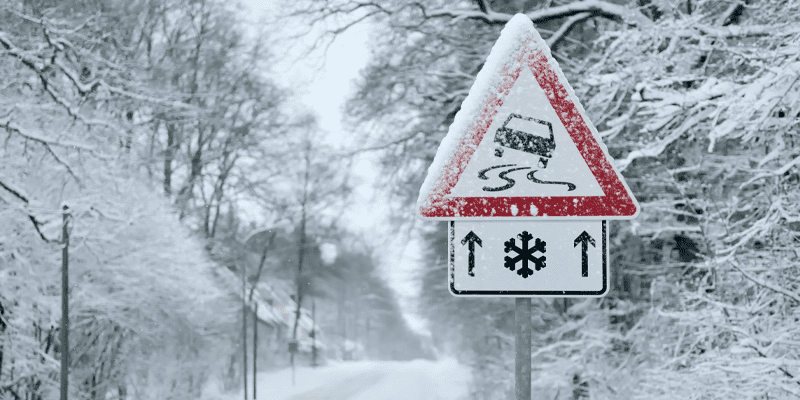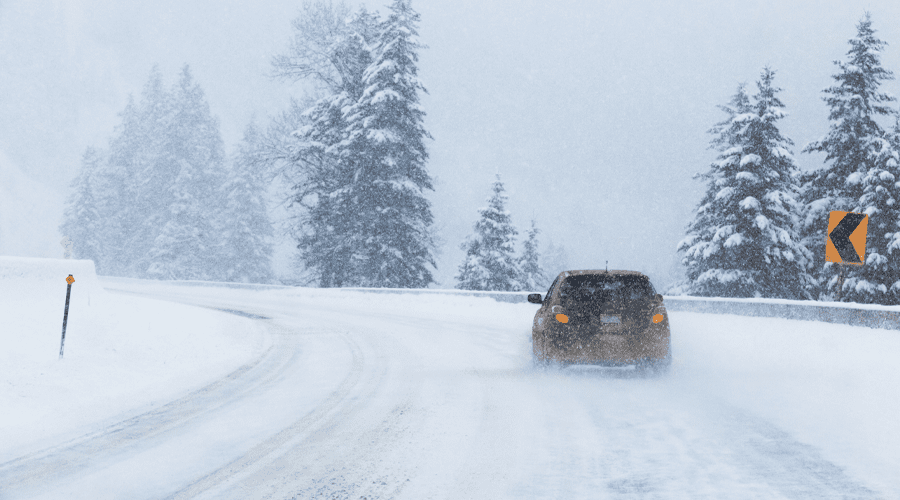
Driving in Winnipeg: Winter driving tips
We have all had the experience of driving after a fresh snowfall, playing our favourite music, and admiring the blanket of white across the city until… you slide. After that first slide, you lower the music, assume the 10 and 12 position, and grip your steering wheel like it is being ripped from your hands. Although we all know what improper driving looks like in other seasons, in a Winnipeg winter, it is easy to lose control of your vehicle even when you are a safe and considerate driver.
Whether you have been born and raised in this snowy city, or are new to our drastic weather conditions- driving in a Winnipeg winter is a skill that needs to be learned for the safety of you and other drivers on the road. Read through the following tips and learn how you can improve your winter driving in Winnipeg.
5 Winter Driving Tips:
Winter tires are essential
Canada has severe winter conditions. Some places might have more snow and colder temperatures than others, but in general, all cities suffer from the harsh conditions of winter. If you are an owner of a car, you have probably questioned if you really need winter tires? The answer is yes, you do.
Driving in winter is unlike driving in any other season. Tires are made to grip the cement, but during winter, that cement is covered in ice, snow and slush leaving you susceptible to sliding down the street. Winter tires are developed to grip the road better and ensure the rubber doesn’t freeze. It’s important you equip your vehicle with all four winter tires. You would never leave the house with just one boot, so why would you only put two winter tires on your car.
Mind your speed
Driving in Winnipeg during the winter is a shared, and sometimes frustrating, experience. With snowfall on a regular basis, traffic moves slower for many reasons. From unsafe road conditions to snowplows clearing the streets; traffic can pile up at any given time. Although traffic is frustrating, it is not a reason to speed. Speeding on icy roads can lead to accidents, damage and harm for yourself and other drivers.
It may seem obvious, but driving slower during the winter is essential to staying safe on the road.
Be mindful of other drivers
There are two things that add frustration to driving during a Winnipeg winter. Firstly, not leaving enough space between cars to slow down and stop. And second, not knowing how to properly handle a vehicle when it is sliding or skidding down the road.
To address the first pain point, it is important to factor in the recent weather when coming to a stop at a red light or behind other vehicles. Snow, ice and black ice worsen road conditions and make it hard to drive on, let alone slow down and stop. Leaving enough time to come to a complete stop at least a car distance away is the best way to avoid rear-end collisions or sliding through a stop sign.

What to do when your car starts to slide?
Let’s talk about how to stop your car from sliding and skidding in the snow. When you are driving in the winter this is almost inevitable. At one time or another, your car will slide. The best way to stop this from happening is to know how to handle your car when it does.
First, take your foot off the accelerator, the gas pedal keeps your tires spinning and at this time we need to focus on controlling the car. Instead of slamming the brakes, just gently “pump” them. This will trigger the ABS function to safely lock your brakes.
Next, when skidding, steer into the skid. Which means to turn towards where the back of the car is sliding. Take a deep breath and focus on keeping your steering wheel still. Do this smoothly as possible, as over-reacting will likely make the car spin faster. Remember, although it feels like you are not in control, your car will correct itself if you do these steps.
Prep an Emergency Kit.
When driving during the wintertime we want to be cautious with everything, not just with the way we drive. Unpredictable situations can happen and an emergency kit can really help. Some things you can keep in your car include:
- Non-perishable food items, such as a protein bar
- Plastic water bottles so they don’t break
- Extra clothing, including hat, mitts and a scarf
- First aid kit and a seatbelt cutter
- Small shovel and scraper
- Wind‑up flashlight or flashlight with extra batteries
- Whistle or horn to attract attention
- Roadmap and compass
Watch the weather
Winter weather is very unpredictable. One day can be warm and sunny and the next blizzarding or freezing rain. Looking ahead at the weather before any long trips can help you stay safe and be prepared. Some key weather conditions that you should be aware of are:
- Blizzards
- Heavy snowfall
- Freezing rain or drizzle
- Cold snaps
- Heavy winds
- Black ice
- Slush
Take caution when driving in any of these conditions, and if you feel unsafe pullover and call for help. Driving in the winter doesn’t always have to be stressful. Drive slow, drive safe, and respect other drivers on the road. Don’t forget to equip your car with winter tires and prepare an emergency kit for your safety.
Winter tires in Winnipeg
We know just how expensive winter tires can be, but your safety is more important. That is why Birchwood Credit is a part of the Winter Tire Program (WTP) which provides low-interest financing to eligible Manitobans, on up to $2,000 per vehicle. You have the option to pick a financing plan between one to four years with monthly withdrawals.
If you are interested in the winter tires program. Find more information at the Birchwood Tires website and learn how you can apply today,
Stay safe, and drive carefully out there.



